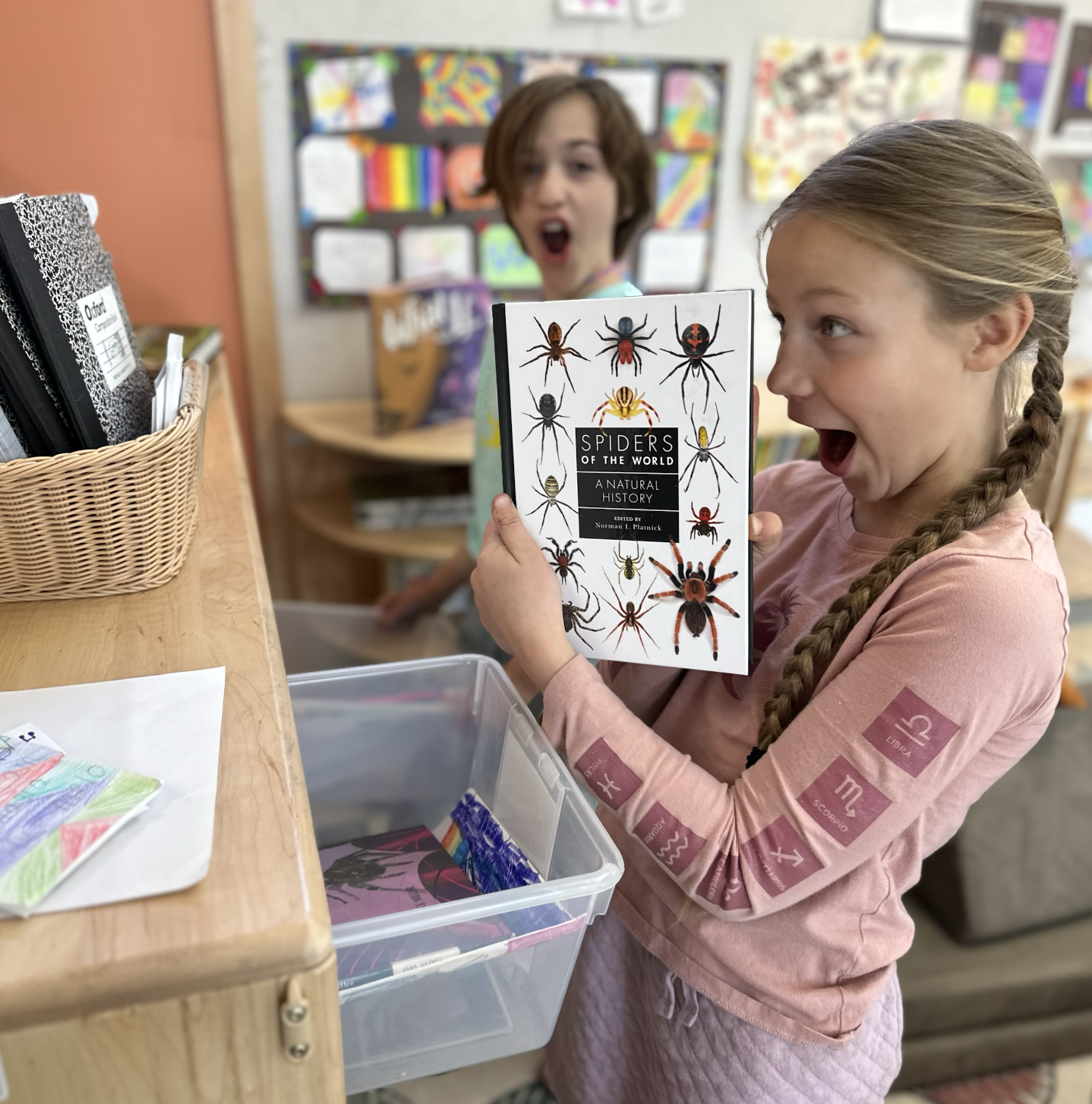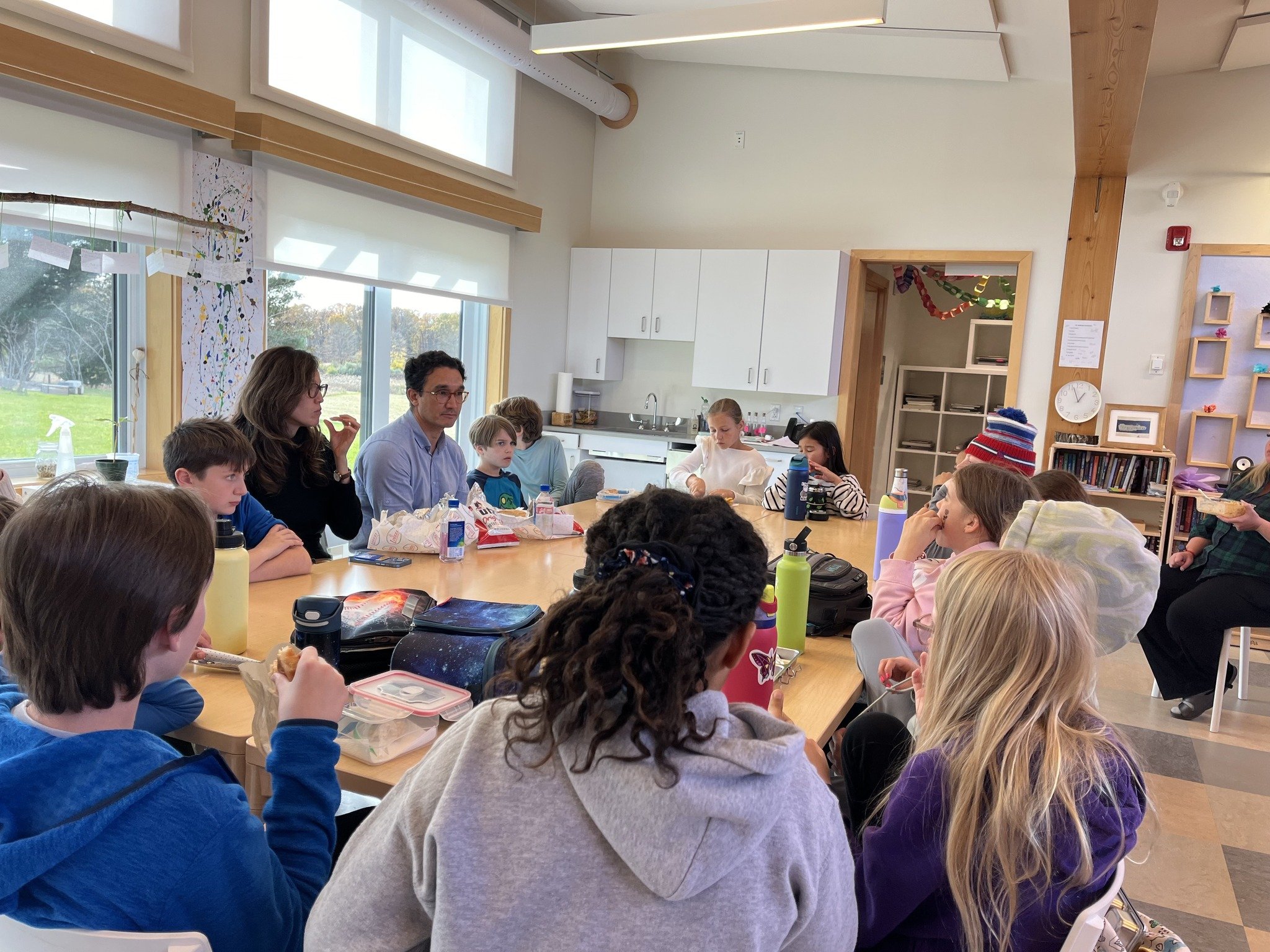
Curiosity-Driven Education Blog



Lunchtime Conversations: Nurturing Curiosity and Inspiration Through Visiting Experts at Slate School
By Jennifer Staple-Clark, Founder and Executive Director
We nurture student curiosity, awe, and wonder, and their questions and wonderings abound. For years, we’ve connected as many students as we can with experts relevant to their project topics. At Slate School, we have 4-5 project cycles each year where every one of our current 67 students select a project topic and then delve into their research and learning for 6-8 weeks each time. Books, resources, and experts are curated for the student projects. Among the many project experts who have visited with our students, we’ve had a physicist visit with a 1st grader studying roller coasters, an endocrinologist meet with 6th grade students studying diabetes and cancer, an ornithologist meet with a 1st grader studying birds, and a rugby coach meet with a student studying the sport. These individual conversations have been remarkably empowering and valuable to our students, and this year, we’ve expanded this concept to monthly Lunchtime Conversations, where an inspiring guest joins our Grade 5/6 students for a lunch conversation.
We began our Lunchtime Conversations program this Fall in collaboration with the Yale World Fellows Program, which brings trailblazers and practitioners from all sectors for a 4-month residential experience at Yale. Extraordinary Yale World Fellows visited during their time in New Haven. Our first Lunchtime Conversation was with Shamil and Gulnara Ibragimov. Shamil is a Director of International Programs and Development at Ilim Educational Complex in Kyrgyzstan. Our Grade 5/6 students had the opportunity to listen to Shamil’s story and about the work that he does in Kyrgyzstan. Shamil shared that his family also has a school in Kyrgyzstan, and he was curious about what our students love about Slate School. Everyone shared how important it is that Slate School offers them the freedom and opportunity to learn and study what they’re passionate about.
A few weeks later, we were thrilled to be joined by Federica Du Pasquier, Strategic and Diplomatic Advisor at the International Committee of the Red Cross (ICRC). Federica shared her work coordinating the humanitarian diplomacy work of the International Committee of the Red Cross, including her time in Israel and Palestine, Ukraine, Syria, Yemen, and Ethiopia. We are so grateful to Federica and to the Yale World Fellows Program for making these wonderful opportunities available to our students.
We also welcomed Richard Prum, Yale Professor of Ornithology, Ecology and Evolutionary Biology, who visited both with our Grade 3/4 and Grade 5/6 students. Though this conversation wasn’t during lunchtime due to the bird specimens that joined us, too, the format for student wondering and curiosity was the same. Professor Prum’s intriguing and profoundly interdisciplinary and collaborative work was so inspiring to our students and to all of us at Slate School. The inspiration for his visit originally arose as our Grade 5/6 students were diving deep into compounds, paint pigments, and art history. Since not all color is from compounds and pigments, we turned to birds to understand structural color and light. Along the way this month, our Grade 5/6 students learned about light, color, Newton's prism experiment, nanostructures, bird feathers and color, and evolution. Richard Prum discovered the nanostructure that gives rise to the blue color of birds, and what an incredible visit we had with him! He brought bird specimens to observe, and he was so generous in taking time to answer our students' many questions and wonderings. He also shared how important it is that we follow our interests and take time to learn about all that surrounds us, which is something that we hold dear to our hearts here at Slate School. "Follow the goosebumps," he told our students, as he shared that his discoveries give him goosebumps all the time. His passion, joy, curiosity, and brilliant research made the experience so meaningful to our students.
We look forward to many more upcoming Lunchtime Conversations, including our Zoom conversation next month with Chemistry Professor and NYU President Emeritus Andrew Hamilton, whose research at the intersection between chemistry and biology has been groundbreaking. We are excited for all of the questions and wonderings that our students will have for him and for our future extraordinary experts.
About The Blog Author, Jennifer Staple-Clark
For nearly 25 years, Jennifer Staple-Clark has been a leader in nonprofit innovation, and she currently leads two nonprofit organizations: Unite For Sight and Slate School. In 2000, Jennifer, who was then a sophomore at Yale University, founded Unite For Sight in her dorm room. Unite For Sight is now a leader both in global health education and in providing cost-effective care to the world's poorest people.
A cum laude graduate of Yale University, Jennifer received a Bachelor of Science Degree in Anthropology as well as in Molecular, Cellular, and Developmental Biology. Early in her career, Jennifer taught high school environmental science and chemistry, where she brought project-based learning to the independent school where she was teaching. She received a national educator award for her work. After dedicating herself to being a high school educator, Jennifer completed two years of medical school at Stanford University School of Medicine before shifting to pursue her passionate interest in global health and eliminating patient barriers to care through building the nonprofit Unite For Sight into an organizational leader in the field. After more than a decade dedicated solely to Unite For Sight, in 2017, Jennifer founded Slate School, an innovative 501(c)3 nonprofit K-12 curiosity-driven and nature-based school in Connecticut. As part of her work as Founder and Executive Director of Slate School, Jennifer draws on her science, medical, anthropology, and public health background to integrate curiosity-driven, interdisciplinary chemistry, biology, and physics into the Upper Elementary classrooms. She is also closely involved in the Upper School interdisciplinary curriculum development.